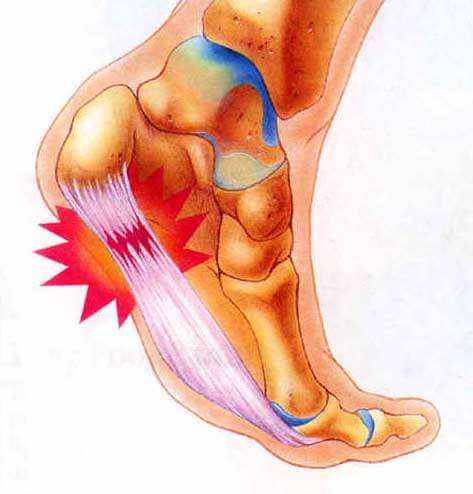 New Orleans Saints player Jim Graham is dealing with a lot of pain right now from a partially torn plantar fascia. He is not on the injured list, but they are taking it day by day to determine how he is feeling and what his activity level can be for that day.
New Orleans Saints player Jim Graham is dealing with a lot of pain right now from a partially torn plantar fascia. He is not on the injured list, but they are taking it day by day to determine how he is feeling and what his activity level can be for that day.Plantar fascia tears are a common result of plantar fasciitis. Your plantar fascia extends from your toes to your heel bone. When the band of tissue has been constantly stretched it can end up having microtears throughout the body of tissue and these tears can cause a lot of pain and inflammation. A partially torn plantar fascia can be an issue for a patient due to some fibers still holding on that are stretching and tearing throughout the day.
So, how can we treat this condition? For plantar fasciitis, the best form of treatment is stretching. By stretching your calf and the plantar fascia, you can loosen up this band of tissue to where it is not as tight and the tissue can move with more flexibility. Another treatment option is steroid shots combined with stretching, because the steroid shot will stop the inflammation cycle and allow you to be able to do the stretches more comfortably. Orthotics are a great treatment option because they can take the stress off of the band of tissue and provide long term relief. Finally, if all other treatment options fail, surgery is the final step for treatment.
Heel pain is not something to be taken lightly, it can affect your everyday performance. If you notice you are having heel pain, it is important that you seek care from your podiatrist so that your plantar fasciitis can be treated before it becomes a chronic more difficult condition to treat.. If you live in the Reading or Dracut, Massachusetts area, Dr. Wachtel would be more than happy to see you and help treat your feet. We are also happy to announce our Methuen and North Andover offices located at 451 Andover St. Suite 300, North Andover MA 01845 and 87 Jackson St, Methuen, MA 01835


